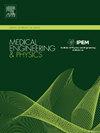Novel fusion-based time-frequency analysis for early prediction of sudden cardiac death from electrocardiogram signals
IF 2.3
4区 医学
Q3 ENGINEERING, BIOMEDICAL
引用次数: 0
Abstract
Sudden cardiac death (SCD) is one of the leading causes of global mortality, often occurring without warning and driven by complex cardiac dynamics. Despite significant advances in cardiovascular diagnostics, accurately predicting SCD at an early stage remains a critical challenge. This study proposes a novel fusion-based time-frequency (T-F) deep learning framework for the early prediction of SCD by classifying associated cardiac conditions. Electrocardiogram (ECG) signals were first denoised and segmented to isolate clinically relevant patterns. These signals were then transformed into two-dimensional T-F representations using spectrograms and scalograms, capturing complementary temporal and spectral information. An average fusion technique merged these representations, enriching T-F images with enhanced discriminatory power. The fused images were used to train deep learning (DL) models, and performance was evaluated using subject-wise data splits to assess generalizability across individuals. The proposed approach achieved a classification accuracy of 94.60 %, effectively identifying cardiac conditions associated with SCD one hour before its onset. This fusion-based framework shows strong potential for integration into real-time, automated diagnostic systems, enabling early warning, personalized monitoring, and timely intervention to reduce fatal outcomes.
基于心电图信号的新型融合时频分析用于心脏性猝死的早期预测
心源性猝死(SCD)是全球死亡的主要原因之一,通常在没有预警的情况下发生,并由复杂的心脏动力学驱动。尽管心血管诊断取得了重大进展,但在早期阶段准确预测SCD仍然是一项重大挑战。本研究提出了一种新的基于融合的时间-频率(T-F)深度学习框架,通过分类相关的心脏疾病来早期预测SCD。首先对心电图信号进行去噪和分割,以分离出临床相关的模式。然后利用谱图和尺度图将这些信号转换成二维T-F表示,捕获互补的时间和光谱信息。一种平均融合技术融合了这些表征,增强了T-F图像的鉴别能力。融合的图像用于训练深度学习(DL)模型,并使用主题数据分割来评估性能,以评估个体之间的通用性。该方法实现了94.60%的分类准确率,有效地在SCD发病前一小时识别出与之相关的心脏状况。这种基于融合的框架显示出强大的潜力,可以集成到实时、自动化的诊断系统中,实现早期预警、个性化监测和及时干预,以减少致命后果。
本文章由计算机程序翻译,如有差异,请以英文原文为准。
求助全文
约1分钟内获得全文
求助全文
来源期刊

Medical Engineering & Physics
工程技术-工程:生物医学
CiteScore
4.30
自引率
4.50%
发文量
172
审稿时长
3.0 months
期刊介绍:
Medical Engineering & Physics provides a forum for the publication of the latest developments in biomedical engineering, and reflects the essential multidisciplinary nature of the subject. The journal publishes in-depth critical reviews, scientific papers and technical notes. Our focus encompasses the application of the basic principles of physics and engineering to the development of medical devices and technology, with the ultimate aim of producing improvements in the quality of health care.Topics covered include biomechanics, biomaterials, mechanobiology, rehabilitation engineering, biomedical signal processing and medical device development. Medical Engineering & Physics aims to keep both engineers and clinicians abreast of the latest applications of technology to health care.
 求助内容:
求助内容: 应助结果提醒方式:
应助结果提醒方式:


